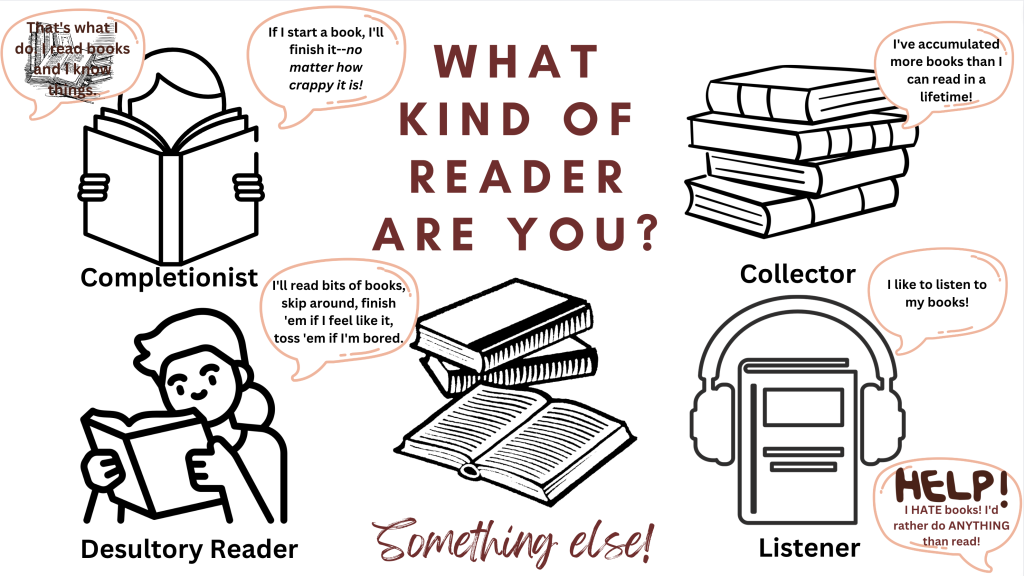Recitation: Portrait of a Reader

So far this week we’ve focused on the ways other people read. It’s time to focus on us! And since this is our first week together, introductions are in order.
Your mission:
- A portrait of yourself as a reader; and
- A Group Portrait of you all as a community of readers (a book club, perchance?)
Preparation:
Your portrait should focus on some facet of yourself as a reader. Here are some ways you might approach the project:
You may talk about the books or the genre you like most and why those works matter to you. You may tell us about how you read: are you a “completionist,” i.e., one of those people who, once you start a book, must finish it–however bad it is? Or are you a “desultory reader” (love that term!) who browses books, reading bits and pieces rather than going from start to finish, and discarding it once it loses your interest? Do you go back and read passages from your favorite books? Do you annotate your books? Do you buy books you don’t read? Is there a favorite place you like to read, or time? Is there a book you keep coming back to?
In a 2021 New York Times article on celebrity bookshelves (“What do Famous People’s Bookshelves Reveal?”), Gal Beckerman observes, “Bibliophiles do not approach bookshelves lightly. A stranger’s collection is to us a window to their soul.” What would your bookshelf reveal about your soul?
What if you hate to read? Tell us about it!
The medium is up to you. You may describe yourselves in words on the page (100-words, maximum). But you’re welcome to do a video (3 minutes max) or a drawing or photograph or cartoon or poem or anything else. What matters is that you characterize yourself as a reader in a way that captures your personality. Be engaging. Be intriguing. Be reflective. Have fun.
Your portrait will tell us how we, as your colleagues and collaborators and friends in this course, should read you.
When you’ve finished your portrait, think about how you might arrive at a sense of your group as a community of readers. Jot down a question or two you’d like to ask everybody. For example, what’s their favorite genre? Is there a book you think everybody surely must have read–if so, ask your colleagues if they’ve read it! E-readers vs. physical books?
Your portrait and questions are the “Conversation Starters” for this week. Upload them to Carmen (Zoomers) or to your discussion board (posters) by 10 PM on Thursday.
Recitation:
On Friday, you’ll share your portraits and get to know your colleagues better both through their portraits and through their answers to your questions. Enjoy yourselves!
Posters: Make your colleagues feel welcome and valued by asking questions and making comments on their posts. Please look out for each other by making sure that everybody’s post has a reply. There’s nothing more disheartening than feeling like you’re speaking into a vacuum.
Report:
Your report will consist of:
- Your original portrait and questions.
- Your group portrait, developed from the following ideas: What did you find out about your colleagues? How would you characterize the group–what range of reading habits and tastes did you discern? What do you (all or mostly) have in common? Based on your (very limited!) sample, does it make sense to talk of a “typical” OSU student reader? If so, tell us what that reader looks like, and if not explain why not. In short, what have you learned about the soul of your group? Feel free to supplement your report with an image or montage or some other means of conveying your sense of the group. You are welcome to upload a short video, if you’d prefer that to a written report.
Ideally, this exercise will help transform a recitation into something more like a club!